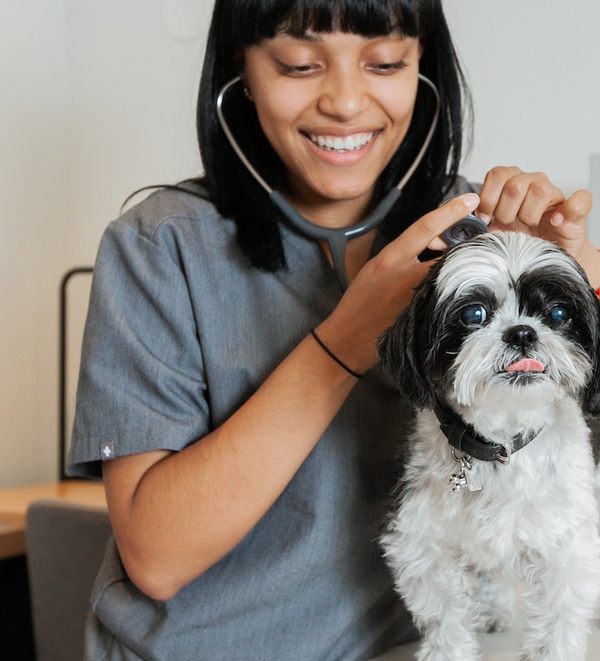
What Is Cherry Eye in Dogs & Cats?
“Cherry eye” refers to the appearance of a pet’s eye when their third eyelid gland is prolapsed.
Here’s what that means.
Dogs and cats have three eyelids. In addition to the two we can easily see, the third eyelid (also referred to as the nictitating membrane) is a pinkish tissue at the inner corner of the eyes. If you’ve ever suddenly woken your pet up and seen a thin pink layer covering part of their eye, you’ve likely spotted their third eyelid.
The third eyelid not only provides an additional layer of eye protection, but also produces the eye's protective tear film, which keeps your pet's cornea lubricated. However, sometimes the tear-producing gland of the third eyelid can “prolapse,” or flip out of its normal position.
When this happens, the tear gland sticks up and is much more visible than it normally would be. Over time, it can also become red, enlarged, and irritated, which creates a swelling which protrudes out the corner of one or both eyes. This is where the “cherry” description comes from.
What causes cherry eye?
This condition is largely related to genetics, and more common in dog breeds with shorter noses. This includes Bulldogs, Cocker Spaniels, Boston Terriers, Shih Tzus, Beagles, Bloodhounds, Shar-peis, Lhasa Apsos, and others.
Cherry eye is less common in cats than in dogs, but it does happen in this species, too.
What are signs your pet may have cherry eye?
If you see a pink or red “lump” toward the inner corner of your pet’s lower eyelid, you may be seeing a cherry eye. Contact your vet to confirm and see what sort of treatment is recommended at that stage.
Sometimes, other eye symptoms or irritation may be noted, including red, itchy, watery, goopy, or dry eyes, squinting, pawing at the eye area, or rubbing the eye on the floor or furniture. If left untreated, eye conditions can get worse quickly, so it’s best to contact your vet as soon as you notice anything out of the ordinary.
How is cherry eye diagnosed?
Cherry eye can be diagnosed just by observing your cat's or dog's eye.
Your vet may recommend additional tests to look for complications (for example, a scratch on the eye if your pet’s been pawing at the eye area) and to check the overall health of the affected eye.
SPEAK TO OUR SURGERY CONCIERGE — IT’S FREE
What is cherry eye surgery?
A cherry eye correction surgery involves suturing the prolapsed gland back into its normal position.
If surgery is pursued, it’s important to schedule as soon as possible. The longer the gland stays prolapsed, the more damage can occur (which can impact future tear production and lead to other eye problems).
What does recovery look like?
Specific instructions may vary on your pet’s individual needs, but here's what your pet will likely receive after their surgery:
- Pet-safe oral medications for pain and inflammation.
- Pet-safe anti-inflammatory eye drops or ointment.
- An Elizabethan collar that your pet will wear for 14 days. The collar is necessary to prevent scratching and rubbing as much as possible, so your pet doesn’t accidentally remove their sutures too early or scratch the surface of their eye while trying to reach an itch.
- A recommendation for bed rest until the sutures are removed.
Your vet surgeon will also let you know how to monitor your pet at home, and when they need to return for a recheck.
Can you prevent cherry eye?
Since cherry eye is related to breed and genetics, it’s not possible to completely prevent the condition. Your best bet is to seek prompt veterinary care for any eye problems that do develop.
If adopting from a breeder, consider choosing a puppy who doesn’t have cherry eye or other eye issues in their lineage.